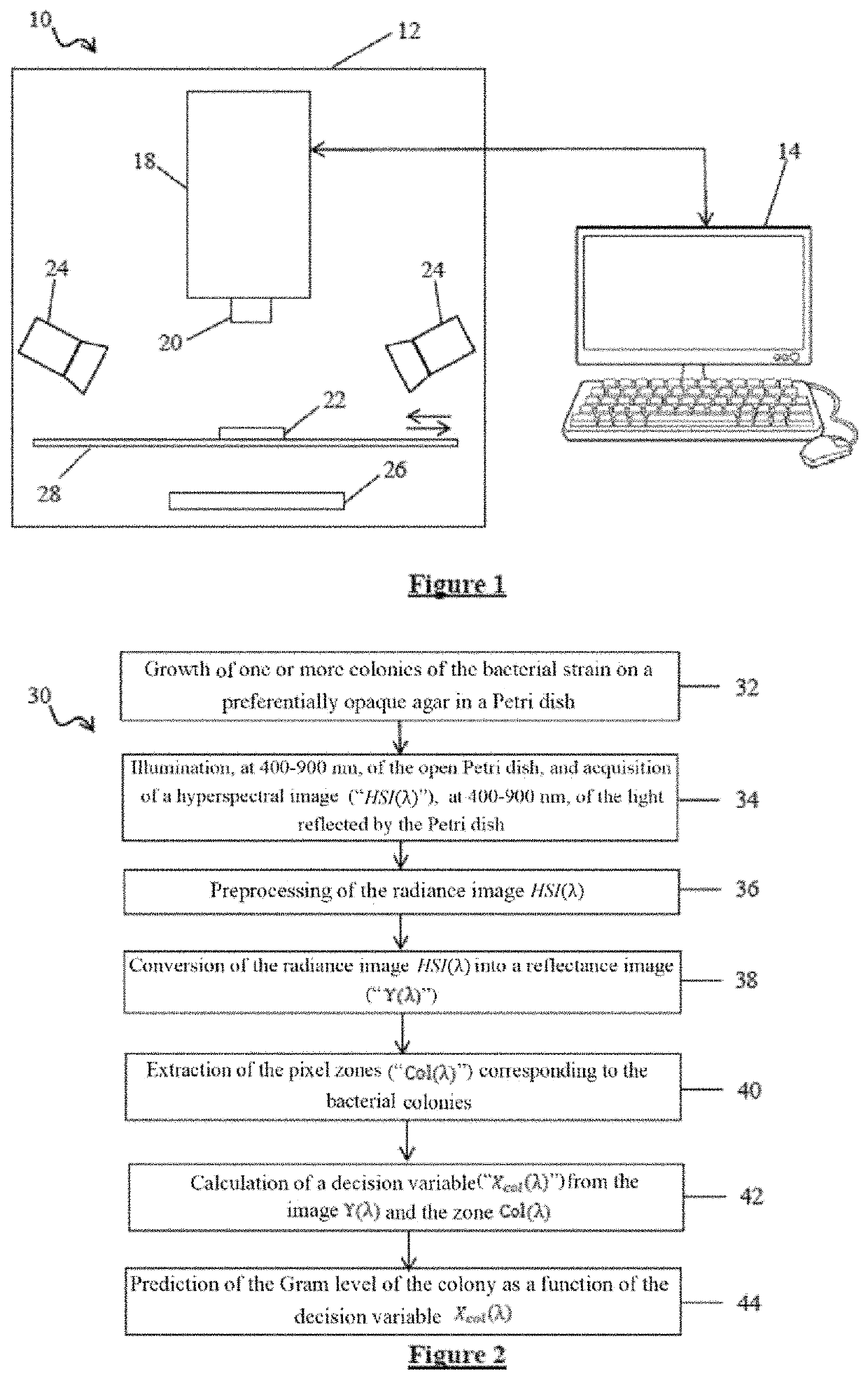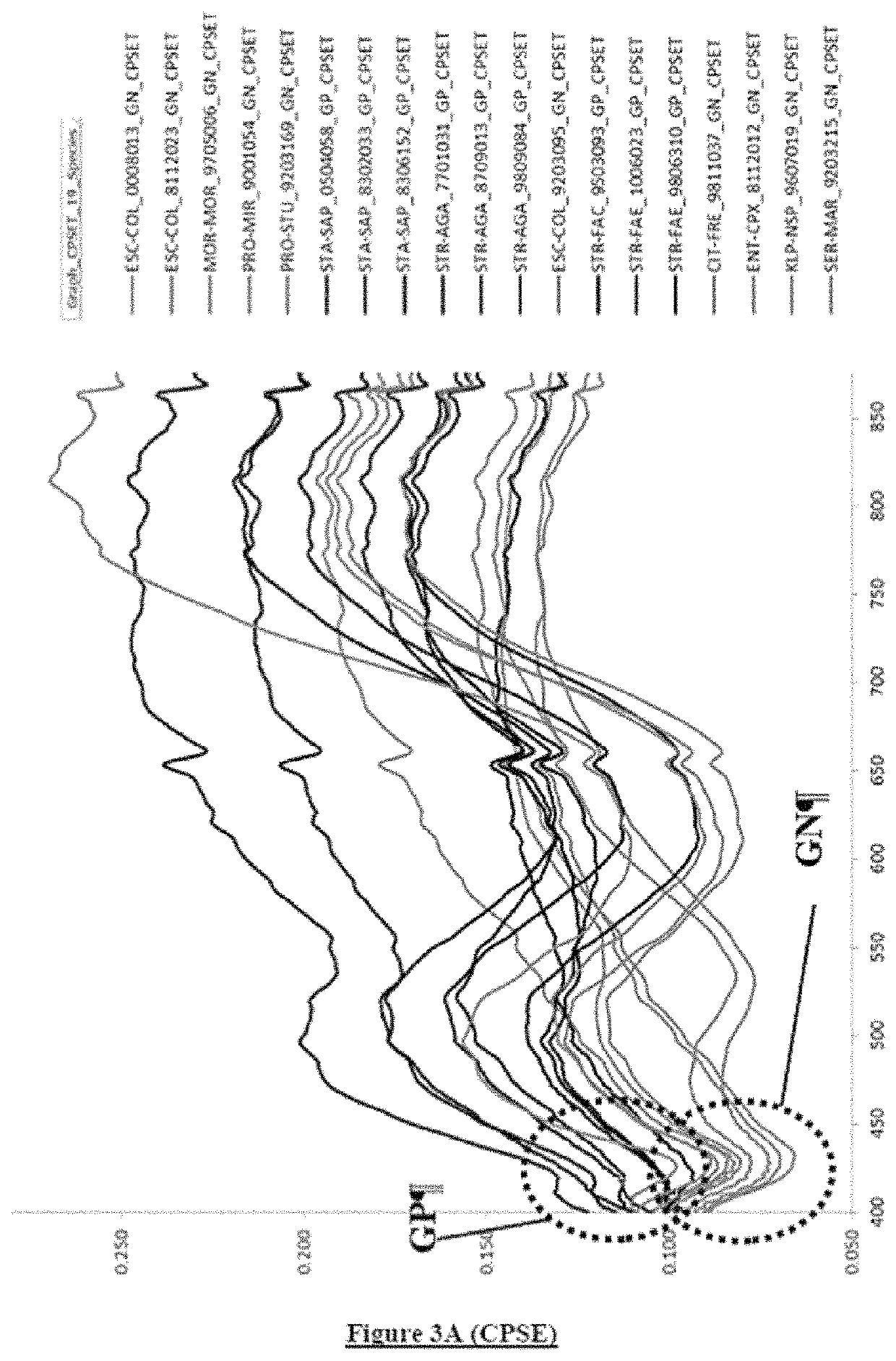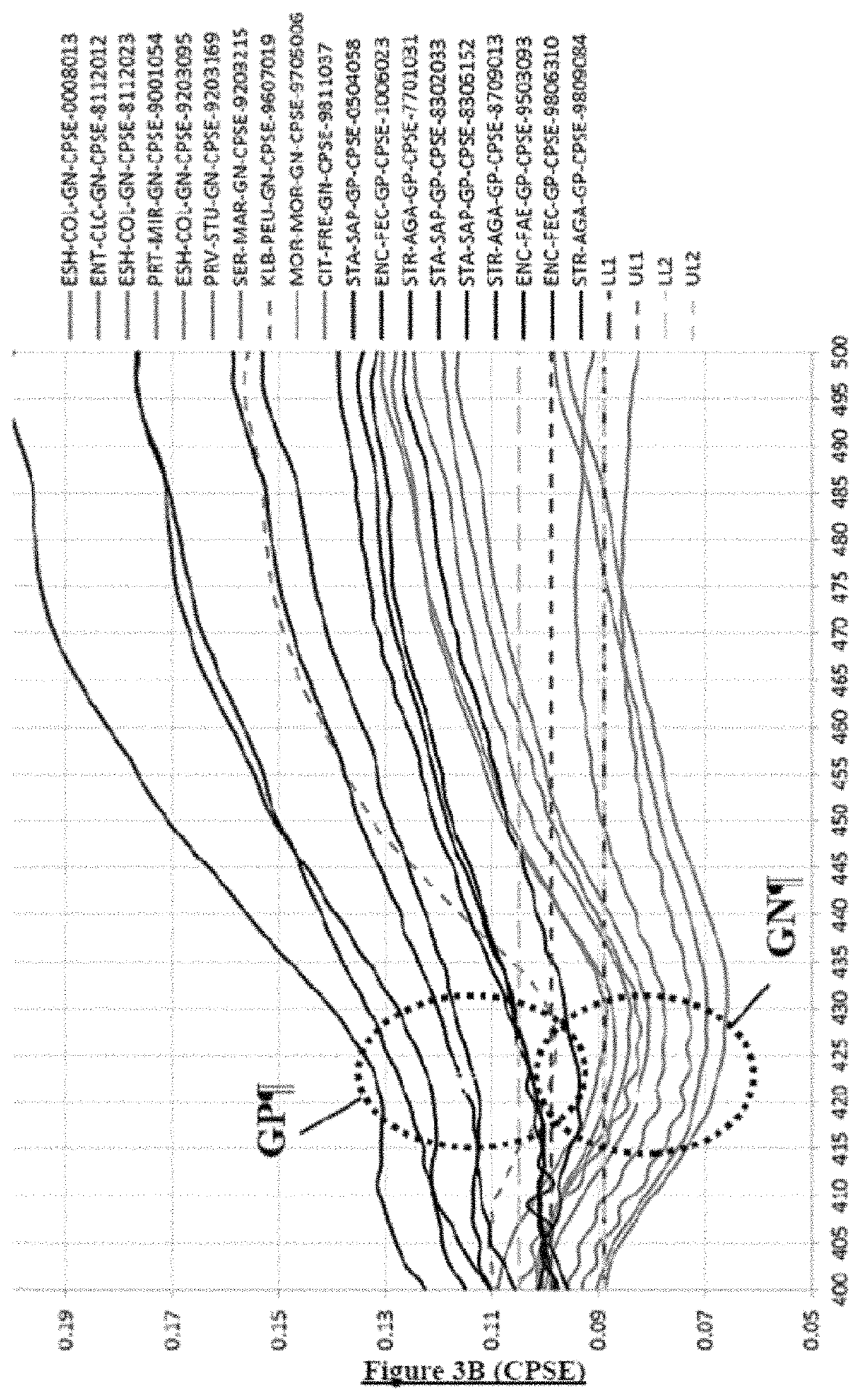Process and system for identifying the gram type of a bacterium
a technology of gram-type bacteria and identification process, which is applied in the field of microbiological analysis, can solve the problems of difficult automation, long implementation time, and the type of technique is not therefore entirely automated
- Summary
- Abstract
- Description
- Claims
- Application Information
AI Technical Summary
Benefits of technology
Problems solved by technology
Method used
Image
Examples
Embodiment Construction
[0063]In the subsequent text, the notation Ai,j relates to the element of the ith row and of the jth column of the matrix A.
[0064]Referring to FIG. 1, a system 10 for detecting the Gram type of a bacterial strain according to a first embodiment comprises:[0065]a device 12 for acquisition of a hyperspectral image; and[0066]a data-processing computer unit 14 connected (e.g. by a wired or wireless link) to the device 12 for controlling it and for receiving and processing the images acquired by the device 12.
[0067]The device 12, for example a hyperspectral imaging system of reference “Pika II” from the company Resonon, Mont. USA, comprises:[0068]a “hyperspectral” camera 18, consisting of a digital sensor comprising a network of elementary sensors, for example a digital sensor of CCD or CMOS type, sensitive in the wavelength range [λmin; λmax]=[400; 900] nanometers, and of a light-scattering element or of a spectrograph for selecting a wavelength to be acquired by the sensor;[0069]an obj...
PUM
| Property | Measurement | Unit |
|---|---|---|
| wavelength | aaaaa | aaaaa |
| reflectance | aaaaa | aaaaa |
| reflectance | aaaaa | aaaaa |
Abstract
Description
Claims
Application Information
 Login to View More
Login to View More - R&D
- Intellectual Property
- Life Sciences
- Materials
- Tech Scout
- Unparalleled Data Quality
- Higher Quality Content
- 60% Fewer Hallucinations
Browse by: Latest US Patents, China's latest patents, Technical Efficacy Thesaurus, Application Domain, Technology Topic, Popular Technical Reports.
© 2025 PatSnap. All rights reserved.Legal|Privacy policy|Modern Slavery Act Transparency Statement|Sitemap|About US| Contact US: help@patsnap.com



